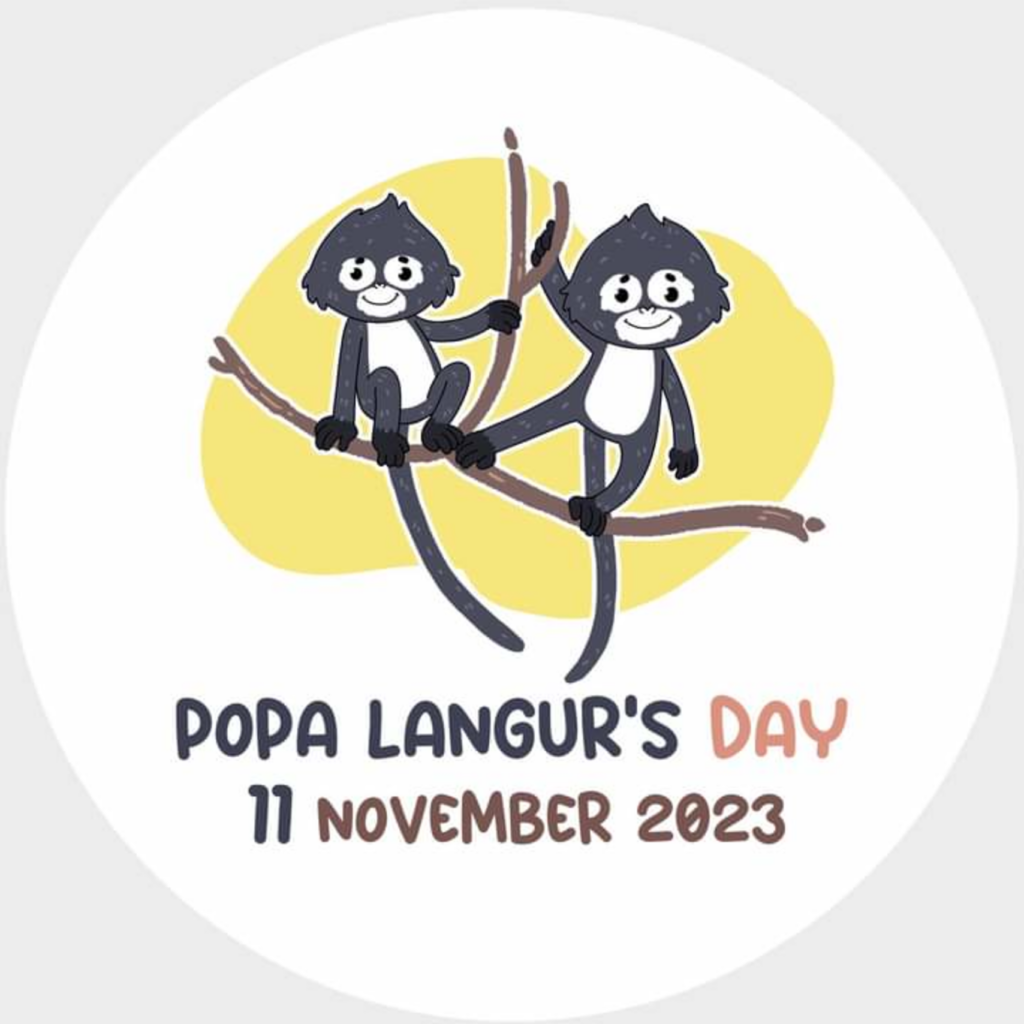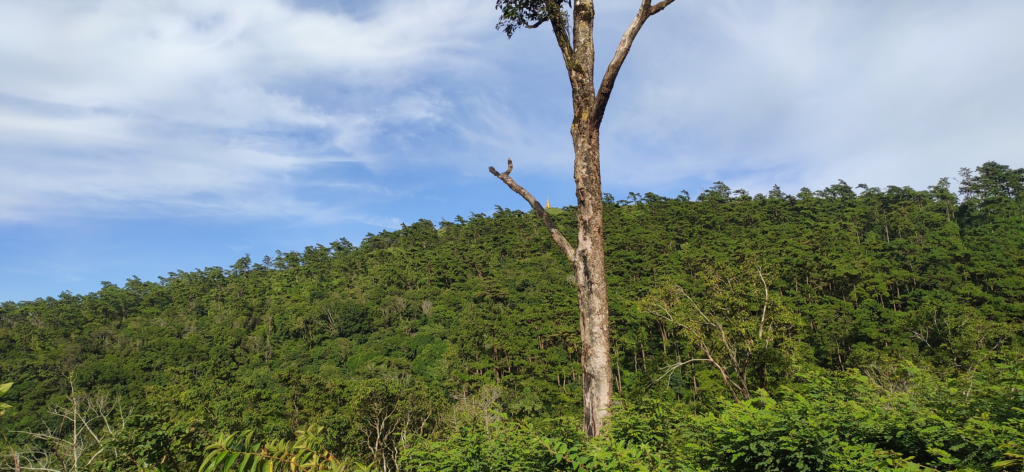The critically endangered Popa langur gets help from a group of local youths.
Thirty-five-year-old geologist Tin Ko Min was born in the foothills of Mount Popa, an extinct volcano in Myanmar, and still makes his home there. “Geological wonders [have] fascinated me since I was in school,” he says. After graduating with a degree in Geology, Tin Ko Min worked as a guide for students visiting Mount Popa. “Each time I hiked the mountain,” he says, “I felt that the mountain held many mysteries.”
The central Dry Zone of Myanmar is one of the most climate-sensitive regions in the southeast Asian country. In this desert-like landscape, characterized by prickly bushes and stunted trees, Mount Popa’s lush forests are unique. Locally called Taung Ma Gyi — “mother hill” — the dormant volcano with its forests is often likened to an oasis. These forests are not only the primary carbon sinks in the region, but also a prominent biodiversity hotspot. Tin Ko Min’s interest in his region’s geography has expanded to include the wildlife found there, specifically a rare species of monkey that locals call Popa myauk. It’s “adorable,” he says, “like a bespectacled old man with its white-rimmed eyes.” Previously thought to be a subspecies of Phayre’s langur, Popa myauk was declared a new species — Trachypithecus popa — by an international group of primatologists in a 2020 article published in the journal Zoological Research.
But though Mount Popa’s fifty square miles of forests was designated as a national park in 1989, forest law enforcement is weak in Myanmar, and current political turmoil has only made it worse. Seeking to protect the park and its unique biodiversity, in 2020 a group of mostly twentysomething locals, led by Tin Ko Min, created a non-profit they call Mahagiri, after the name locals give to the protector spirit of Mount Popa, with the goal of engaging the local community in park preservation. And they’ve turned the lovable, critically endangered, and renamed Popa langur into something of a mascot, putting its image on t-shirts and mugs and celebrating Popa Langur Day on November 11.

“The Popa langur population here is under-studied,” Tin Ko Min says. “We need to know more about their behavior and habitat requirements to come up with a comprehensive conservation plan.”
###
It was in a laboratory, rather than the evergreen and mixed deciduous forests atop Mount Popa, that the Popa langur was identified as a distinct species. It took several years of genetic analysis of tissue samples — including from a 100-year-old specimen from London’s Natural History Museum — along with fecal samples from captive and wild animals, before the gray-furred langur was elevated to its status as a distinct species.
Christian Roos of the German Primate Center-Leibniz Institute for Primate Research, who led the research, says that the main populations of the species consist of an estimated 200 to 250 individuals in Mount Popa National Park and in the Panlaung-Pyadalin Cave Wildlife Sanctuary in Myanmar’s Shan State, making the species critically endangered.
The most stable population of Popa langurs is found in a small area of about sixteen square miles (twenty-six square kilometers) in Mount Popa National Park, which offers the most suitable habitat for the arboreal species. Because of this limited habitat, Roos says, “the species may not be able to sustain a growing population.”
Tin Ko Min, who’s witnessed long-term transformations in the Mount Popa landscape, says that agricultural expansion is gnawing away at the forests. “The ideal Popa langur habitat here is an isolated forest, not connected to any other nearby habitats,” he says. Mahagiri is working to educate villagers around Mount Popa National Park to increase their conservation literacy in general, and to specifically encourage protection of the Popa langur.
Tin Ko Min and his colleagues conduct seminars in schools to teach children about the importance of conserving the Popa langur and other plant and animal species in Mount Popa. They organize free trekking events in the national park to bring local school children and young adults close to nature. When sharing information about the Popa langur, the group emphasizes its “human-like appearance and behavior,” Tin Ko Min said. “When people feel that these animals are just like humans, that familiarity helps instill empathy and care for the species.”
The group is also hoping to publish a booklet in the local Burmese language to drive home the significance of the species among the locals. “We are actually looking for a volunteer with expertise in primatology to help us understand more about this fascinating langur,” he says. “In fact, if any primate expert wants to study the Popa langur population here, we’d be very happy to help them in any way we can.”
The efforts of Tin Ko Min and Mahagiri are paying off. Local villagers know that the Popa langur is an important species now, says Tin Ko Min. “They inform us if they see a group of Popa langurs around their locality so that we can keep an eye out to ensure their safety. A great majority of the people here now have a positive view of the species.”
Interviews were conducted in English and Burmese.



